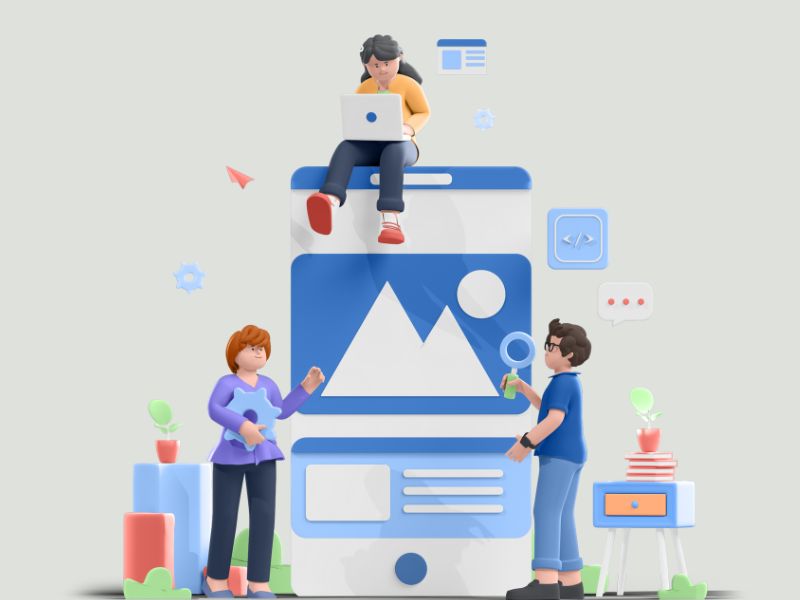In today’s fast-paced digital world, businesses face pressure to evolve constantly. Digital transformation is no longer just a trend; it’s a necessity for survival and growth. Integrating product engineering into this transformation offers numerous benefits that can significantly enhance a company’s performance, innovation, and customer satisfaction. Let’s dive into how digital transformation paired with product engineering can drive success.
What is Digital Transformation?
Digital transformation involves rethinking how a business operates and delivers value to its customers. It’s about leveraging technology to improve processes, culture, and customer experiences. This transformation often includes adopting new technologies, modernizing existing systems, and creating innovative products and services that cater to customer needs.
The Role of Product Engineering
Product engineering plays a crucial role in this transformation. It focuses on the entire lifecycle of a product, from ideation and design to development, testing, and deployment. When businesses integrate product engineering into their digital transformation strategy, they gain a competitive edge.
Benefits of Digital Transformation with Product Engineering
1. Accelerated Innovation
With digital transformation, businesses can innovate more rapidly. By adopting agile methodologies and iterative development practices, companies can bring new ideas to market faster. Product engineering facilitates this by enabling teams to prototype, test, and refine products quickly.
For instance, consider a tech company that integrates customer feedback directly into the product development cycle. By continuously iterating on their offerings, they can keep pace with market demands and introduce features that resonate with users.
2. Improved Collaboration
Digital transformation fosters collaboration across different departments. Digital product engineering company work closely with marketing, sales, and customer service to ensure that products meet market demands. This cross-functional teamwork breaks down silos and fosters a culture of shared responsibility.
When teams communicate effectively, they can solve problems more efficiently and drive innovation. For example, when engineers collaborate with sales teams, they can gain insights into customer preferences, leading to better product features that align with market needs.
3. Enhanced Customer Experience
Today’s consumers expect personalized and seamless experiences. By integrating product engineering into their digital transformation efforts, businesses can design products that cater to customer preferences. This involves analyzing user data, understanding behavior patterns, and creating solutions that enhance user experiences.
For example, an e-commerce platform can use product engineering to develop personalized shopping experiences, such as tailored recommendations based on previous purchases. This approach not only boosts customer satisfaction but also increases sales.
4. Greater Efficiency
Digital transformation drives operational efficiency by automating processes and leveraging data analytics. Product engineering supports this by ensuring that products are designed for optimal performance. When products are engineered to work efficiently, companies can reduce costs and increase output.
For instance, a manufacturing company might implement smart technology in their production lines, allowing real-time monitoring and adjustments. This reduces downtime and waste, ultimately leading to higher productivity and profitability.
5. Data-Driven Decision Making
Data is at the heart of digital transformation. With the right tools, businesses can collect, analyze, and leverage data to make informed decisions. Product engineering teams can use this data to refine products, improve features, and enhance user experiences.
For example, a software company can track user interactions with their application to identify pain points. By analyzing this data, they can prioritize updates that directly address user needs, resulting in a more effective product.
6. Scalability
As businesses grow, they must adapt their products and processes. Digital transformation enables companies to scale effectively, and product engineering ensures that products can evolve with changing demands. This means designing flexible systems that can accommodate growth without compromising quality.
For instance, a subscription service might start small but, as their user base expands, they need to scale their infrastructure. Effective product engineering allows them to enhance their platform seamlessly, ensuring that it remains robust as demand increases.
7. Competitive Advantage
In a crowded marketplace, standing out is essential. Digital transformation combined with strong product engineering can provide a significant competitive advantage. By continuously innovating and improving products, businesses can differentiate themselves from competitors.
A great example is a mobile app that frequently updates its features based on user feedback. This commitment to continuous improvement not only attracts new users but also retains existing ones, fostering loyalty in a competitive landscape.
8. Cost Reduction
While digital transformation requires an initial investment, the long-term savings can be substantial. By optimizing processes and improving product quality, businesses can significantly reduce costs. Product engineering focuses on designing efficient products, minimizing waste, and ensuring that resources are used effectively.
For instance, a company that adopts 3D printing for prototyping can save money on materials and production time. This approach allows for rapid iterations without incurring the costs associated with traditional manufacturing.
9. Enhanced Security
With the increasing reliance on digital solutions, security becomes paramount. Digital transformation allows businesses to implement advanced security measures that protect data and systems. Product engineering supports this by integrating security features into products from the ground up.
For example, a financial services company might embed encryption protocols directly into their software products, ensuring that customer data remains secure. This proactive approach helps build trust with customers and complies with regulations.
10. Future-Proofing the Business
The digital landscape is always changing, and businesses must be prepared to adapt. Digital transformation with product engineering positions companies to respond to emerging trends and technologies. By fostering a culture of innovation and flexibility, businesses can stay ahead of the curve.
For instance, companies that invest in research and development can quickly pivot their products to meet new market demands. This adaptability ensures that they remain relevant and competitive in a rapidly evolving environment.
Implementing Digital Transformation and Product Engineering
To reap the benefits of digital transformation with product engineering, businesses should take a structured approach. Here are some steps to consider:
1. Assess Current Capabilities
Before implementing changes, evaluate your current processes, technologies, and capabilities. Identify areas where digital transformation can bring immediate benefits. This assessment helps in prioritizing initiatives that will drive the most value.
2. Set Clear Goals
Define specific objectives for your digital transformation efforts. These could range from improving customer satisfaction to increasing operational efficiency. Clear goals provide a roadmap for your initiatives and help measure success.
3. Invest in Technology
Adopting the right technologies is crucial for successful digital transformation. Invest in tools that support collaboration, data analysis, and product development. This might include project management software, data analytics platforms, and product lifecycle management systems.
4. Foster a Culture of Innovation
Encourage a mindset of innovation within your organization. Empower teams to experiment, take risks, and share ideas. Creating an environment where employees feel valued and motivated can lead to breakthrough innovations.
5. Focus on User-Centric Design
Ensure that your product engineering efforts prioritize user needs. Involve customers in the design process through surveys, feedback sessions, and usability testing. Understanding their perspectives helps create products that resonate in the market.
6. Measure and Iterate
Establish metrics to evaluate the effectiveness of your digital transformation efforts. Regularly review performance data and gather feedback to identify areas for improvement. Iterative processes allow for continuous refinement and growth.
Conclusion
Digital transformation paired with product engineering offers significant benefits that can propel a business to new heights. By accelerating innovation, improving collaboration, and enhancing customer experiences, companies can achieve operational efficiency and remain competitive. Embracing these changes prepares organizations for the future, ensuring they can adapt to new challenges and opportunities. As businesses continue to navigate the digital landscape, integrating product engineering into their transformation strategy will be key to unlocking lasting success.



